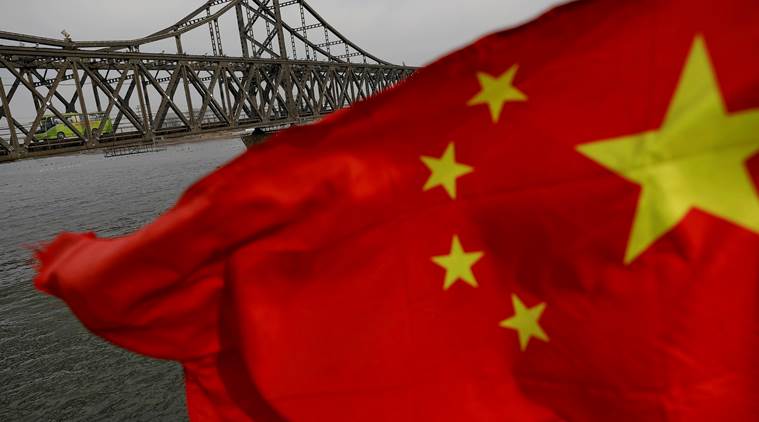Is China meritocratic?
Its examination system is famous for its rigour, but its quota system gives preference to the privileged

The role of meritocracy in Chinese history, focused on the so-called examination system, has been a matter of long scholarly scrutiny.
In its self-image, China is a meritocratic society. Many observers of China agree with that assessment. So how does China judge the merit of its citizens? And is merit also the basis for the selection of political leaders?
These were among the questions of a Harvard-sponsored workshop in Shanghai, in which I participated recently. The workshop compared the evaluation of merit in India and China. Indian readers of this column are familiar with India’s system of merit assessment, mostly by experience. Let me, therefore, turn to the Chinese method of merit appraisal, especially for its younger citizens for college entry. In a future column, I will analyse the role of merit in political recruitment.
The role of meritocracy in Chinese history, focused on the so-called examination system, has been a matter of long scholarly scrutiny. For centuries until 1905, Chinese emperors selected their bureaucrats on the basis of performance in examinations. As Francis Fukuyama has argued, bureaucratic merit came to be intimately associated with state-building in China. By and large, India’s rulers — Hindu, Muslim and British (in the first century of East India Company rule) — did not pursue this route and relied on patronage, hurting the state-building process. Moreover, the Chinese examination system became so famous for its rigour and standards that it attracted European attention. Some scholars argue that after the collapse of the East India Company in 1858, even the British Crown used the Chinese model to structure the Indian Civil Service (ICS) examinations.
But of immensely greater relevance in modern times is the Chinese examination system for college entrance, called the gaokao. Instituted in 1952 by Mao Zedong to aid China’s modernisation, it was also singlehandedly terminated by him during the Cultural Revolution (1966-76). Professors and students from urban China were forced to go to the countryside and learn from the peasants. Mao came to view standard educational merit as nothing more than a facade for elitism. For the entire decade of the Cultural Revolution, the universities barely functioned.
In December 1977, 15 months after Mao’s death, the gaokao was reintroduced. The post-Mao leaders argued that China’s modernisation required reinvigoration of higher education. By now, this examination system has become truly gigantic. In their final year of high school, over 9 million students take the exam. This year, 9.4 million did.
Consider what happens to China for 2-3 days in early June, when students take the gaokao. Near the examination centres, there is no construction work, no traffic noise, and the cops enforce street calm. Ambulance vans are available to deal with nervous breakdowns, and security cameras check for cheating, which can lead to seven years in jail. Primetime TV discusses how difficult the exam questions were.
In a recent issue, The Economist calls gaokao the world’s most important examination, whose scores are also now acceptable to many European, Canadian and Australian and some American universities, such as the New York University. Gaokao has four parts: Chinese, English, Mathematics, and one of two optional streams, sciences (physics, chemistry, biology) or the humanities (political science, history, geography). Roughly 70 per cent of the students pass the exam, earning the right to enter China’s 2,000-odd universities and colleges. That may not sound meritocratic at all until one realises that the competition for the top 100 colleges is intense. And, even more tellingly, one has to score in the highest percentile to be able to enter the most prestigious colleges, such as the Tsinghua and Peking Universities in Beijing and Fudan in Shanghai.
As a comparison, the joint entrance examination (JEE) for the IITs comes to mind. Considerably less than 2 per cent of applicants make it to the IITs. It is rightly called one of the most meritocratic tests in the world. But some differences are noteworthy. The Chinese exam is not for technical education, but for the college system as a whole, including the sciences and humanities. Indian national entrance tests are primarily for engineering (and medical) education, not for college entrance in general.
Of course, India’s colleges, including the IITs, are also governed by affirmative action. By now, all over India, 49.5 per cent of seats in higher education are reserved for the historically disadvantaged SCs, STs and OBCs. Given the entrenched inequalities of caste, India’s democracy found it impossible to function only on the basis of merit. In the 1910s and 1920s, Brahmins were a mere 3 per cent of the population of Madras Presidency, but they comprised 75-80 per cent of Madras graduates. A merit-based system, if continued, would have essentially reproduced caste hierarchies. India’s democracy imposed the principle of inclusive representation on the education system. China’s affirmative action programme is slender, compared to India’s. A few points, roughly 1 per cent-7 per cent, can be added to candidates’ scores if they come from the minority communities, constituting 8.4 per cent of China’s population.
But as we dig deeper, we find that China, in fact, practises affirmative action in reverse. The hukou system and the provincial quotas for colleges, decided mostly by the central government, jointly produce this outcome. All Chinese carry a rural or urban hukou, which also specifies the province they come from. The top colleges are in the leading cities, such as Beijing and Shanghai. These colleges reserve a substantially larger proportion of seats for those who carry local hukous, even if their gaokao scores are lower.
Some years ago, it was reported that the Tsinghua and Peking universities, two of the most prestigious Chinese universities, both based in Beijing, took 84 out of every 10,000 candidates carrying Beijing hukous, but only 3 out of every 10,000 from the poorer Anhui province. Another report took the point further. Generally speaking, a student from the poorer and more rural Western provinces would have to get 690-700 points, out of a maximum 750, to get into Tsinghua, whereas a Beijinger would need only 660-670. Beijing hukou holders get into Tsinghua and Peking Universities more easily.
A true meritocracy would place equally meritorious students from rural or urban settings, richer or poorer provinces, on an equal footing. India amends this principle by reserving seats for those who may score lower but are historically deprived. China modifies the principle in the opposite direction. Its quota system gives preference to the privileged. That is also not meritocracy, but a serious violation of it.
For all the latest Opinion News, download Indian Express App
More From Ashutosh Varshney
- Why did China agree to Wuhan?Anything which arrests India’s potential drift towards the US and its allies is good for China...
- Liberals and nationalismThey disapprove of Hindu nationalism, but support the constitutionally consecrated view of the nation..
- Denying Nehru his dueWere ancient Indian polities democratic, democracy thus representing India’s enduring culture? And what was Jawahar Lal Nehru’s role in institutionalising democracy?..







































No hay comentarios:
Publicar un comentario